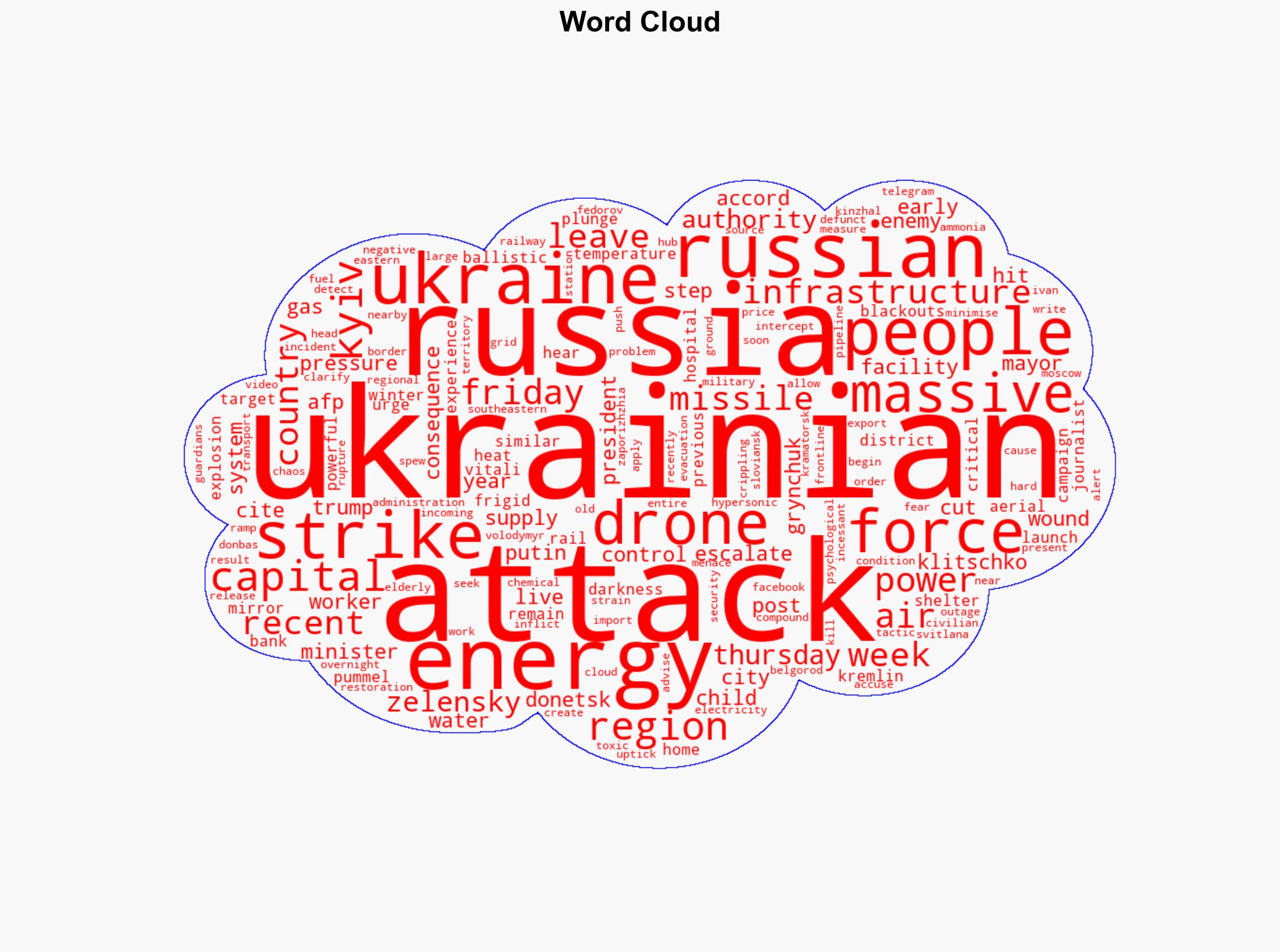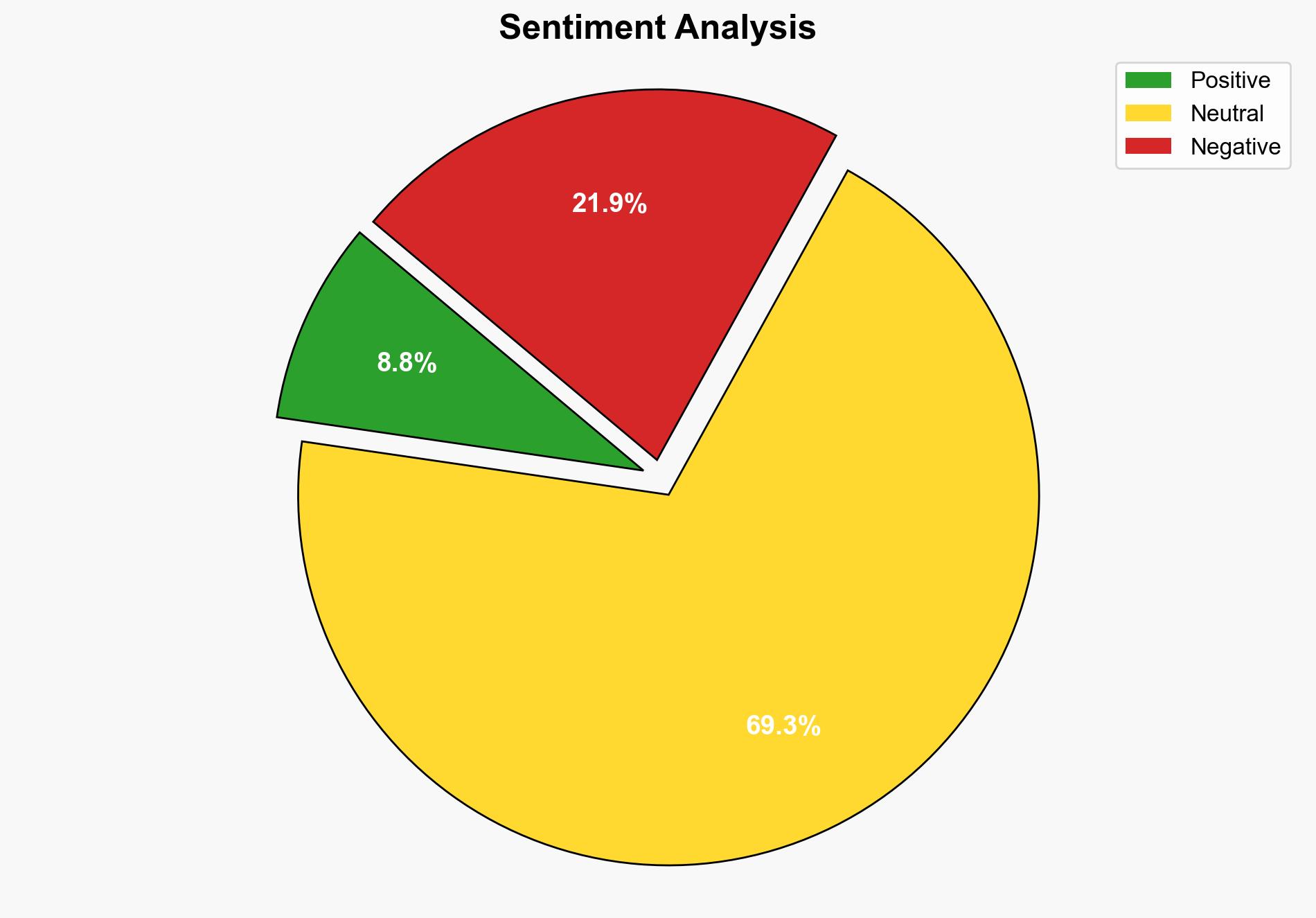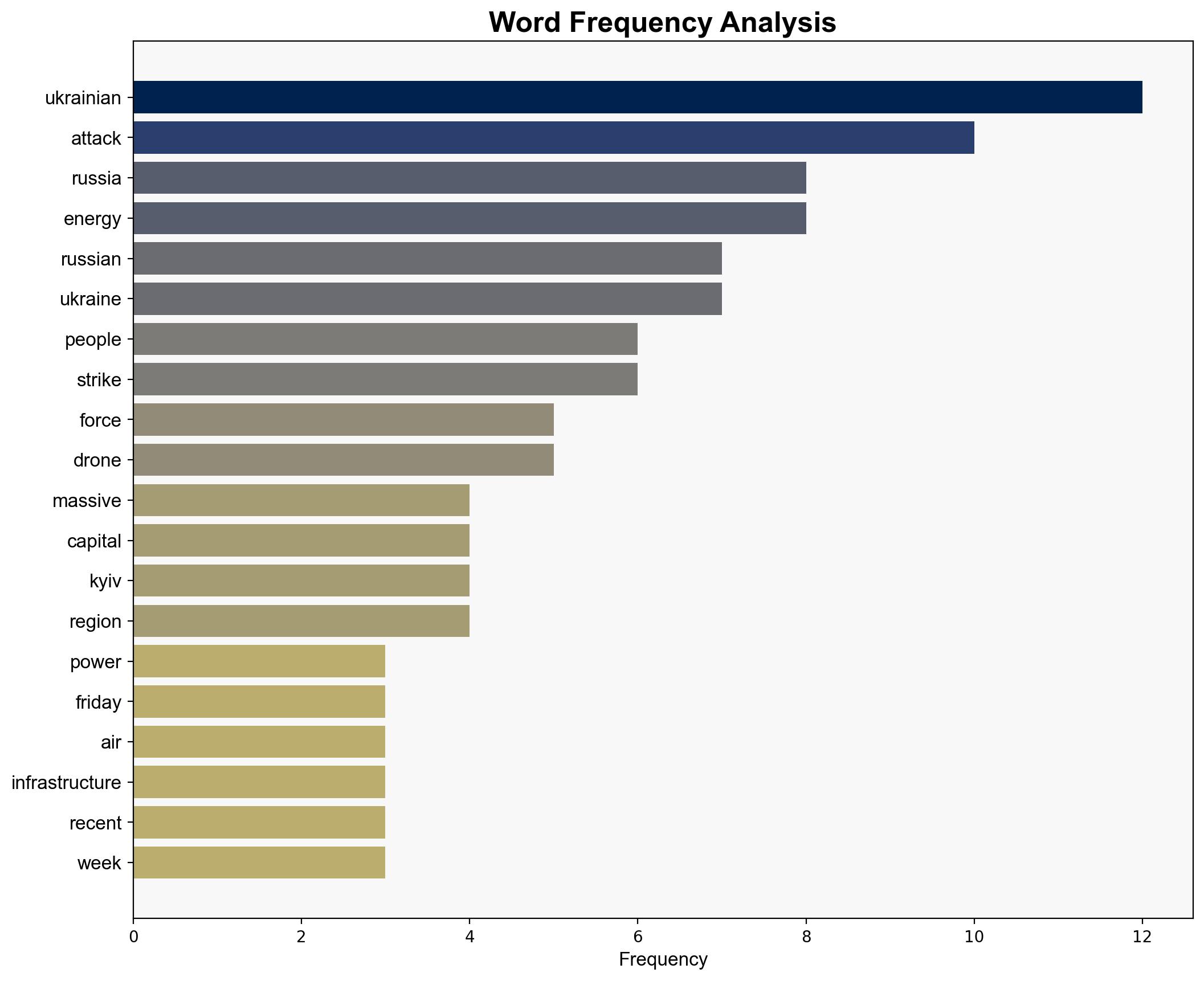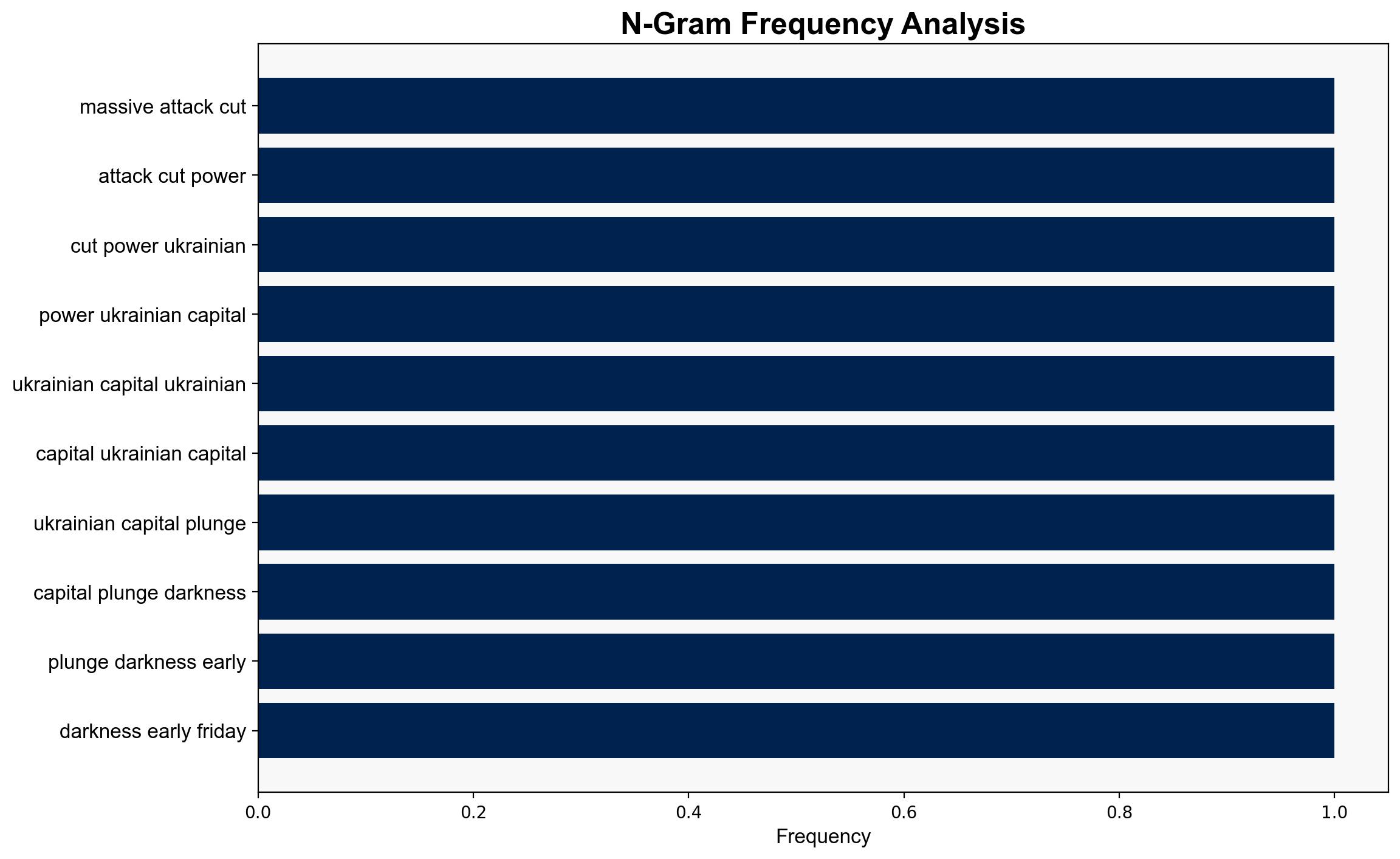‘Massive Attack’ Cuts Power In Ukrainian Capital – International Business Times
Published on: 2025-10-10
Intelligence Report: ‘Massive Attack’ Cuts Power In Ukrainian Capital – International Business Times
1. BLUF (Bottom Line Up Front)
The most supported hypothesis is that Russia is intensifying its strategic campaign to degrade Ukraine’s critical infrastructure, aiming to weaken its resilience and morale. Confidence level: High. Recommended action: Strengthen Ukraine’s air defense capabilities and enhance international diplomatic efforts to deter further aggression.
2. Competing Hypotheses
1. **Hypothesis A**: Russia is deliberately targeting Ukraine’s critical infrastructure to create widespread chaos and pressure Kyiv into concessions. This is part of a broader strategy to destabilize Ukraine and force a political settlement favorable to Moscow.
2. **Hypothesis B**: The attacks are primarily retaliatory, responding to Ukrainian strikes on Russian territory, aiming to deter further Ukrainian offensives by demonstrating Russia’s capability to inflict significant damage.
Using ACH 2.0, Hypothesis A is better supported due to the systematic nature of the attacks on infrastructure, consistent with previous Russian military strategies. Hypothesis B lacks comprehensive evidence of a direct correlation between Ukrainian strikes and the timing of Russian attacks.
3. Key Assumptions and Red Flags
– **Assumptions**:
– Russia has the capability and intent to sustain a prolonged campaign against Ukrainian infrastructure.
– Ukraine’s defensive measures are insufficient to fully protect against such attacks.
– **Red Flags**:
– Potential overestimation of Russia’s strategic coherence; internal political dynamics could lead to inconsistent military actions.
– Lack of detailed information on the effectiveness of Ukrainian countermeasures and international support.
4. Implications and Strategic Risks
– **Economic**: Prolonged infrastructure attacks could cripple Ukraine’s economy, increasing dependency on foreign aid.
– **Geopolitical**: Escalation could draw in more direct involvement from NATO allies, risking broader conflict.
– **Psychological**: Sustained attacks may erode public morale in Ukraine, potentially impacting political stability.
– **Cyber**: Increased risk of cyberattacks on Ukrainian and allied networks as part of a hybrid warfare strategy.
5. Recommendations and Outlook
- Enhance Ukraine’s air defense systems with advanced technology to mitigate future attacks.
- Strengthen international diplomatic pressure on Russia through sanctions and UN resolutions.
- Scenario Projections:
- **Best Case**: Successful diplomatic intervention leads to a ceasefire and negotiations.
- **Worst Case**: Escalation into a broader regional conflict involving NATO forces.
- **Most Likely**: Continued attritional warfare with periodic escalations and international diplomatic stalemates.
6. Key Individuals and Entities
– Vitali Klitschko
– Svitlana Grynchuk
– Volodymyr Zelensky
– Ivan Fedorov
– Yulia Svyrydenko
7. Thematic Tags
national security threats, cybersecurity, counter-terrorism, regional focus





